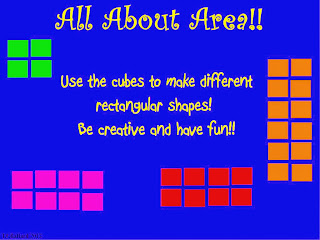So, if you're anything like me...you love to teach. Maybe you don't necessarily love Math but because you teach it every day you've learned to live with it. I guess that's an okay way to consider it, but is it an effective enough approach to teach someone mathematical concepts?? I'll let you be the judge but I learned a long time ago that if I was going to have this beautiful relationship with Science that I had to at the very least, maintain a working relationship with his cousin Math. My mathematical knowledge is my student's mathematical knowledge. How can we expect our students to "get" and enjoy Maths if we don't ourselves. Sure you could just "make it work" but just how effective is making it work?? We can ask Congress about the results of that kind of thinking. Teachers must understand and be nimble with the concepts they teach their students in order for their students to get the most out of coming to school each and every day. Love what you do and know how to do it!!
This and other posts like it can help you understand more about the concepts you're teaching in order to make your teaching more effective and your students more effective learners.
Area is one mathematical concept that can be quite fun to learn about and teach. I post the objectives for each subject every day on my blackboard. I used to have my students read the objective before we began a lesson so they would know what they were going to be doing before they did it. I found that when I explicitly told them what they'd be responsible for, the inquiry part of the entire lesson was lost. I now have them discuss the objective after the lesson as a way to "check" to see if we've done what we needed to do. The objective for this lesson was: We will use our collaboration and analysis skills to describe and represent area as a measure of cover using square units.
On the first day of the lesson I showed my students the flipchart page below and gave them a set of "square units" (also shown) to use in order to make the rectangular shapes referred to. I challenged them to make as many different rectangular shapes as they could. Although they were having a ball, they were also making sense of what it means to make equal shares, practicing making 2-d rectangular shapes, utilizing counting, addition and multiplication skills and deciding on how many square units were needed in order to cover an area...all while "playing around" with squares.
The next day our objective was the same. Our challenge however was different. After practicing counting square units in different areas I asked them to predict how many square units they thought it would take to fill in the area of the first letter in my name which is a "T".
After they made their predictions and some shared them, we proved our predictions correct or incorrect by physically filling in the square units on the Promethean Board.
After which I gave them a sheet of square units and challenged them to find out how many square units it would take to make the first letter in their name.
The next day we put our new found skills to work and did a few of these exercises as a clss to reinforce the idea that area refers to a measure of cover. We also "played around" with square units again to remind students of where we started and where we've arrived.
Finally I gave my friends the opportunity to show me what they knew themselves, with no one else's help. The activities below are some examples of the exercises I gave them to assess their content knowledge. The sheets are successive, meaning that the first sheet you see is the first one I gave them on the first day of practice, the second sheet on the second and so on. Similar sheets were given to them for homework each day so they could practice what they'd learned in school at home with their parents.
As always, if you have ActivInspire, the link is here: Hello!













No comments:
Post a Comment